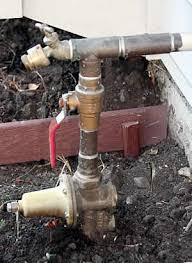Maximize Your Water Damage Insurance Claim
Whether you’re a Home Owner or a renter you should know how to maximize your water damage claim. Coming home from work to your home covered in water or finding water pouring from your ceiling can be stressful, at that moment you’ll be glad you have homeowners insurance. Having homeowners insurance does not mean your claim will be 100% covered, or even worse approved. Either way insurance companies are quick to collect your monthly payment, but are not motivated to payout for claims made. Here is a guide to help you maximize your claim and make sure you are covered.

1. Stop the Source
As soon as you have come across any signs of water damage to your home you need to take steps to stop the damage from furthering. Insurance companies have to right to deny portions of your claim, on the grounds that you did not intervene ASAP.
Depending on the source of your water damage you need to stop further water from coming into your home. If a pipe had burst in your walls, you need to find your water shut-off valve to your home, depending on your area it can usually be found in your front yard where your hose is connected (1/4 turn valve on the pipe coming up from the ground into your home as seen to the left). Other types of water damage may spring from: toilets, refrigerator, washing machines, dish washers, roof leaks, or storm damage. Mitigate toilet leaks by finding the 1/4 turn valve on the water supply line behind the toilet. If the leak is before the valve then you’ll have to turn the water off to your house using the image above from outside your home. With roof leaks carefully attempt to tarp over your roof to stop water from coming in, but it is better to call a roofer to tarp your roof. Storm damage that results from a broken window you’ll need to board-up the window as soon as possible to block the rain from coming in. Make sure to call your relevant specialist as soon as possible (Roofer, Plumber, Restoration specialist). They may have the answers or actions you should take to limit the damage until they can start working on the repairs. Also keep any items that were damaged during this process so that you can show that to the adjuster to make sure you get that covered and replaced.

2. Review Your Policy
One of the best ways to avoid getting your water damage claim denied is by reading the policy and finding out exactly what kinds of exceptions they’ve laid out. Even though this is dull work, knowing the ins and outs of your policy can give you insight into the language you need to avoid as well as the details that you should absolutely include to give yourself the best chance of approval.
3. Collect Evidence To Support Your Claim
Your insurance provider is going to ask for you to provide evidence of the water damage to better assess your claim. This is important because the adjuster may not be able to schedule an inspection until later on in the claims process and a restoration company may have started the restoration process of your home. Nowadays this is very easy with the advance of technology. Take as many photos of the damage as you can, a good rule is that you can never have too many photos for insurance companies. Make sure to include the source of the damage such as a broken pipe, your roof leaking, water heater… etc. Make sure you add captions to your photos so that the adjuster knows what he is looking at. Also another tactic is to take a photo from the other side of the room then a closer photo so the adjuster can better assess the location of the picture. Make sure then to create an inventory of anything that has been damaged and include those items value, and the cost to replace such items. If you’re not sure, your restoration experts should have amounts for common items like drywall. They can also help you research the value of a piece of furniture or other items.
Have the other professionals you’re working with create quotes and reports that explain what happened and what it will cost to fix the damage. Experienced roofers and plumbers should be familiar with this process. If you decide to pay for any quick repairs up-front, be sure to keep your receipts.
4. Make Your Claim
The next step is to contact your insurance company. Reporting as soon as you can is important so that you do not ruin your chances of being approved. Make sure you have your policy number ready and on hand to help this process along since that is the first thing they will ask for. If you are required to fill out a “proof of loss form” make sure to ask for the adjuster to send it via email (much faster than waiting for snail mail). If you are nervous to file a claim yourself because you do not want to say anything wrong, or do not have time for it ask your restoration specialist to make the claim for you. They have lots of experience in making successful claims to insurance companies of any claim size.
5. Flood Damage or Water Damage?
In the realm of insurance claims, there is a huge difference between flood damage and water damage. Flood damage is caused by natural occurrence and usually affect more than one home. Other than that all other claims such as broken pipes, HVAC leaks, appliances are all categorized as water damage. Make sure to know what is causing the damage, and make sure it is covered in your policy. Make sure you update your policy if your home has experienced anything that was not covered so that you can get a new policy and they can provide you with the right coverage.
6. Consider a Public Adjuster
The water damage insurance claim process can be slow. Your insurance company has 15 days to send an adjuster, who will assess the water damage. It is usually wise to hire a public adjuster if you can, especially if your claim is large. These professionals aren’t tied to the insurance company, so they are looking to find the truth, not looking to minimize the insurance company’s payout.
7. Be Cautious of Their Vendors
After they have assessed the water damage, your insurance company has another 15 days to make a decision about your claim. If they approve some or all of the claim, they have another 5 days to send you the money.
During this time, the insurance company may encourage you to use their vendors. They will have their own trusted plumbers, roofers and restoration experts. However, these professionals get their work through the insurance company, so they are likely to support the company’s best interests instead of yours. You want someone who is on your side, so choose professionals you trust to make the repairs.
Are you worried about maximizing your water damage claim? Good Times Plumbing & Restoration will handle your claim for you, from start to finish. We’ll make sure your best interests are served and that you get the coverage to which you are entitled.


